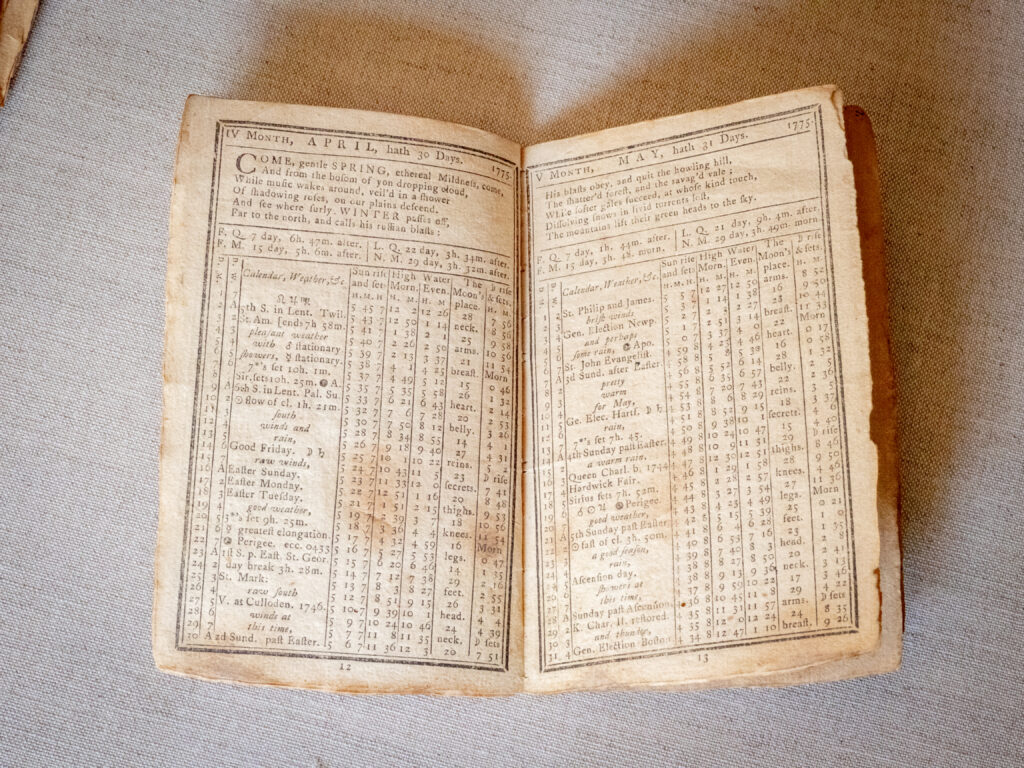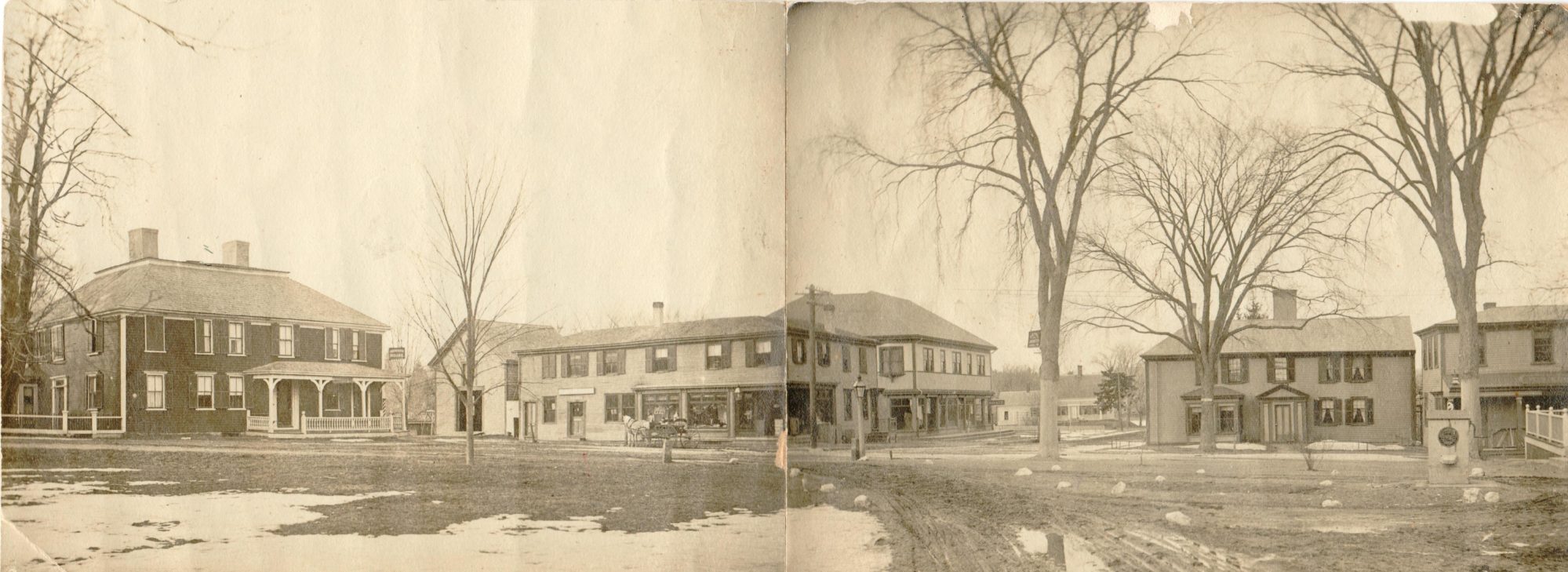The Revolutionary War - Hanover Historical Society (hanoverctv.org)
Two and a half centuries ago, the people in the small town of Hanover in Colonial Massachusetts were anxious and troubled. Protests and demonstrations were occurring throughout Massachusetts and the other colonies. When War started, it separated families as husbands, brothers, fathers, and sons enlisted to serve, some for three months, some for three years, and a few for the entire eight years of the war.
For the farmers, tradesmen, and families of Hanover, the years before, during and after the Revolutionary War were trying times filled with sacrifice and uncertainty. In 1783, after eight years of struggle and conflict, the War was over. The former colonies were now the United States. The people of Hanover were no longer the subjects of a crown, they were citizens of a Republic. They were Americans.
Three documents, preserved in the collections of the Hanover Historical Society, chronicle the town’s history during those years, listing out the names of those who fought and served in America’s War for Independence.

Paper, string
Dims: H 6 ½” x W 4 ¼”
Printed by Mills & Hicks, Boston, 1774
Hanover Historical Society
This is a copy of Bickerstaff’s Boston Almanack for 1775, the most popular almanack in the colonies at the time with a circulation of over 60,000. The printers’ office was located on School Street in Boston, “next to Cromwell’s-Head Tavern.” It cost 3 shillings and four pence for a dozen and “seven coppers a single” copy. Almanacks contained useful information for planting, astronomical information, weather predictions, small anecdotes and sayings, and practical listings like dates and locations of court sittings and distances from towns in miles from tavern to tavern. Bickerstaff’s Almanack for the politically charged year of 1775, reprinted the First Charter for Massachusetts granted by King Charles I in 1630, when colonists were looking into their own history of local governance. This copy is missing its paper cover, title pages and first few pages. The entry for April 19th, the day of the Battles of Lexington and Concord, predicted “good weather.”

Mr. Hitchcock’s Election Sermon, May 25, 1774
Paper, string
Dims: H 9” x W 5 ¾”
Printed by Edes & Gill, Boston, 1774
Hanover Historical Society
This sermon was preached on Election Day, May 25, 1774, at the Old South Meetinghouse in Boston. Gad Hitchcock was the minister of the Second Parish in Pembroke, now the First Church of Hanson. This sermon was printed by Edes & Gill “Printers to the Honorable House of Representatives,” at the request of a special House committee and its clerk, Samuel Adams. Rev. Hitchcock’s sermon was based on Proverbs 29:2, “When the righteous are in authority, the people rejoice: but when the wicked beareth rule, the people mourn.” The sermon was directed at the military governor of Massachusetts, General Thomas Gage, who was in the audience. “Much lies at stake honored fathers,” Rev. Hitchcock proclaimed, “not to this province only, but to the rest of the colonies.” It is “the united voice of America, with the solemnity of thunder and with accents piercing as the lightning, [which] awakes your attention, and demands fidelity.” The “soil we tread on is our own, the heritage of our Fathers,” he stated pointedly, and “we are disposed to assert our rights, and hold our liberties sacred.” The Rev. Hitchcock preached another sermon later in 1774 on December 22 at Plymouth and “in commemoration of the first landing of our New-England ancestors in that place, Anno Dom. 1620.”

Captain Soper’s Company, Hanover Militia
December, 1775
Hanover Historical Society
Even before the Battles of Lexington and Concord ended on April 19, 1775, the call for volunteers went out across Massachusetts. This is the original list of Capt. Joseph Soper's North Hanover Militia Company, which enlisted on April 20th, 1775. They prepared to march to Marshfield where British soldiers were stationed. They reached Duxbury alongside other local militia companies, but the British soldiers evacuated to Boston before there was any fighting. These were just the first of enlistments from the town. A total of 184 men from Hanover served during the eight years of the Revolutionary War. The date of December on the document is when this company of enlistments received their pay.

Colonel Bailey’s 2nd Massachusetts Regiment
March, 1777
Private Collection on loan to the Hanover Historical Society
This extraordinary document is a bounty list for soldiers enlisting in Col. John Bailey’s 2nd Massachusetts Regiment. They joined in March, 1777, for three years of service in the Continental Army. These names of three African-American soldiers from Hanover, Pero Cushing, Cuffe Tilden, and Prince Bailey / Dunsick, are found on this document. African-American and Native-American soldiers enlisted and served alongside of white soldiers in the Continental Army. After the Revolutionary War was over, the American Army would not be completely integrated again until the time of the Korean War in the early 1950s.

Cuffe Tilden (ca.1756-1778) was born in Hanover as one of the black slaves of Job Tilden (1726-1809), who was a slave dealer.
When the War broke out, Job Tilden became a lieutenant, and his slave Cuffe joined the militia, adopting his master’s last name. Cuffe served in Capt. Samuel King’s Company, Col. Josiah Whitney’s Regiment at Hull from July 17 to November 1, 1776. He enlisted in Col. John Baileys 2nd Massachusetts Regiment in March, 1777. The 2nd Mass. Regiment saw action at the Battle of Saratoga in the Fall of 1777.
Cuffe Tilden died at Valley Forge on January 28th, 1778. He was buried in an unmarked grave, like many who died at Valley Forge, alongside his fellow soldiers.
He was twenty-two years old.

“When I was about eight years of age, I was stolen from Africa my native country and brought to America; my original name was Dinsick—but on my arrival I was called by may masters name which was Bailey.”
Prince Bailey was a slave of George Bailey of Hanover who enlisted in Col. John Bailey’s 2nd Massachusetts Regiment in March, 1777. He served the full term of three years. He was in the battle of Saratoga, survived the winter at Valley Forge, and saw action at the Battle of Monmouth. He was discharged honorably in 1780.
He returned to Hanover where he married Hannah Vineson and moved to Leeds, Maine. They had no children. He petitioned for a pension in 1818, but died poor, in 1831.
He was eighty-two years old.

Captain Webb’s 12th Division of Six Months Men
July 11, 1780
Hanover Historical Society
As the Revolutionary war dragged on, more volunteer and enlistments were needed, from different parts of the colonies and different occupations. This is a list of men enlisting for six months service under Capt. George Webb (1740-1825). Capt. Webb was the commanding officer for the famous Deborah Sampson during his service. The enlistments here joined in Springfield, Massachusetts in July of 1780, when most of the fighting had moved to the Southern colonies. The document lists names, appearance, occupation, and town of origin. Among the forty-one names, there were twenty-nine farmers and eight other occupations. The youngest name was sixteen, and the oldest forty-six. Eleven were under twenty years old, twenty-five in their twenties, and four were thirty or older. Nineteen were from Essex County, fifteen from Plymouth County, two from Worcester County, four from Bristol County and one unknown. Of the fifteen men who enlisted from Hanover on this list, eight were farmers, two housewrights, two smiths, one carpenter, and one forgeman.

